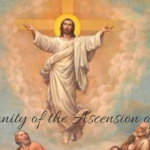Did liberal justices hijack the Supreme Court in 1973, forcing legalized abortion on the whole country? A quick look at the Justices who made that horrendous decision seems to suggest otherwise.
With Roe v. Wade, the Supreme Court voted overwhemingly to support legalized abortion in the United States 7 to 2. Who was in the Majority and who was in the Minority?
Majority
Harry Blackmun
Warren E. Burger
William O. Douglas
William J. Brennan
Potter Stewart
Thurgood Marshall
Lewis Powell
Minority
Byron White
William Rehnquist
The Majority Justices must have all been liberals, yes? Perhaps appointed by Democratic presidents? Wrong. Blackmun, who penned the Supreme Court’s final Majority opinion, was appointed by Republican President Richard Nixon. Also appointed by Nixon were Burgher and Powell. So far, three of the seven Justices in the Majority were appointed by a Republican President. But do not forget that Brennan and Stewart were appointed by Republican President Dwight Eisenhower. This means that five of the seven Majority Justices were appointed by Republican presidents (Douglas and Marshall were appointed by Democratic Presidents Franklin D. Roosevelt and Lyndon B. Johnson, respectively). What’s more, take the two Democratic-appointed judges out of the Majority, and you are still left with all-Republican majority of the Court that legalizes abortion.
Only White (appointed by Democratic President John F. Kennedy) and Renquist (appointed by Nixon) opposed the Court’s decision to legalize abortion in the United States.
So what we see historically is that Roe v. Wade faced six Republican-appointed Justices, five of whom ruled in favor of Roe. Had only four of the six opposed protecting abortion under the Constitution, January 23, 1973 would not have inaugurated the legalized slaughter of 40 million Americans to date.
So what does this mean for the future of American presidential politics? Well, the luxury we have today that voters did not have in the 1960’s and 1970’s is the precedent of Roe v. Wade, which is to say that abortion is a real political issue that shapes elections. However, what Roe v. Wade illustrates is the unpredictability of the voting trends of Supreme Court appointees across their full, life term. Case in point is Blackmun, who was a staunch Republican when appointed to the Court, but by the end of his term, he had become one of the most liberal Justices on the Bench.
More recently, the first substantial challenge to Roe v. Wade after the retirement of pro-Roe Brennan and Marshall occurred in 1993 with Planned Parenthood v. Casey. The case involved Planned Parenthood of Southeastern Pennsylvania as the plaintiff seeking to strike down the Pennsylvania Abortion Control Act, which entailed a 24-hour waiting period prior to an abortion, informed consent (doctors must notify the woman of health risks from having an abortion), spousal notification (woman must inform husband of decision to have an abortion), and parental consent (a minor must have parental consent to have an abortion). It was widely believed that the Court would not only have to consider this particular case, but also make a decision on either upholding or overturning Roe v. Wade. We know what ended up happening.
When Planned Parenthood v. Casey reached the Supreme Court, there were eight Republican-appointed Justices on the Bench: Renquist (Nixon), Blackmun (Nixon), John Paul Stevens (Gerald Ford), Sandra Day O’Connor (Ronald Reagan), Antonin Scalia (Reagan), Anthony Kennedy (Reagan), David Souter (George H. W. Bush), and Clarence Thomas (Bush). The sole Democrat was White, who had been in the Minority for Roe v. Wade.
In theory, what greater opportunity to overturn Roe v. Wade could be conceived? Eight Republican-appointed Justices, five of whom were appointed by Reagan and Bush, and a ninth, Democrat-appointed Justice who voted against legalized abortion in the United States! Well, things don’t often go as they are theorized. Reagan-Bush Justices Kennedy, Souter and O’Connor formed a plurality that upheld Roe v. Wade under the Due Process Clause of the Fourteenth Amendment, claiming the precedent of Eisenstadt v. Baird. They did decide in favor of the 24-hour waiting period, informed consent, and parental consent under the Pennsylvania Abortion Control Act.
The other six Justices wrote or joined opinions, partly concurring and partly dissenting from the plurality. Renquist, Scalia, White and Thomas dissented from the upholding of Roe. Blackmun and Stevens concurred with the upholding of Roe.
So a lesson, I think, that we can take from the history of legalized abortion in the United States is that a presidential candiate–even one as pro-life as Reagan and Bush–cannot be counted on to appoint a Supreme Court Justice that will staunchly oppose Roe. More specifically, I think it is a safe bet, at this point, to assume that a Democratic presidential candidate would appoint a Justice who upholds Roe. By the same token, it is not reasonable to trust that a Republican, pro-life presidential candidate is going to appoint a Justice who desires to overturn Roe. While the Democrat-appointed Justices have maintained staus quo since Roe v. Wade, it was Republican-appointed Justices who ultimately legalized abortion in the United States and, in 1993, sustained legalized abortion.
That said, should we reconsider whether abortion really is an issue in presidential politics? Do we have some semblance of “proportionate reasons” for voting for a pro-choice presidential candidate?
UPDATE: The point of this post is to look briefly at the history of <i>Roe</i> and at assumptions about Supreme Court appointments. It attempts neither to support either the Republican or the Democratic party nor to justify voting pro-choice. Hence, the questions at the end of the post, which are to generate thought and opinion rather than to serve a rhetorical function.
















